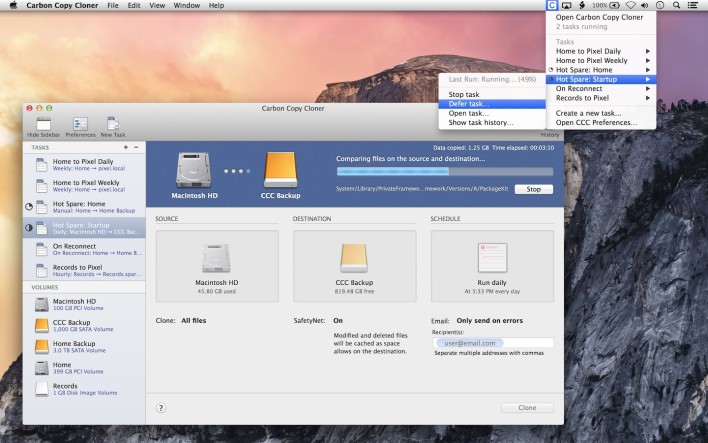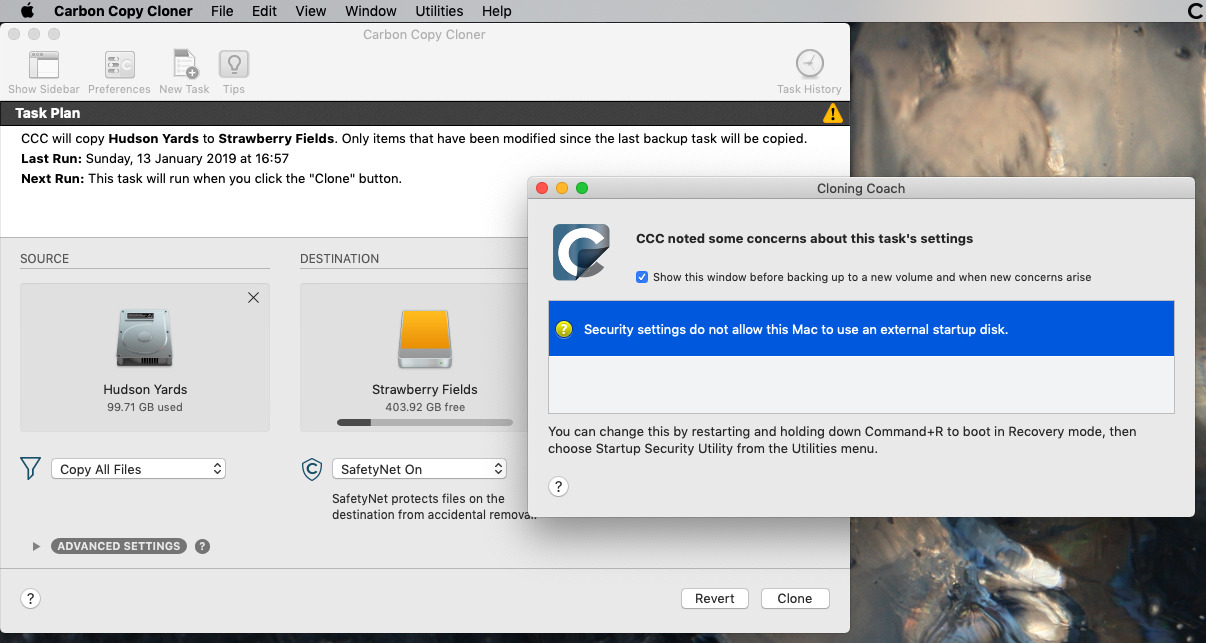

In addition, if you feel like having multiple backups ready to go to multiple locations at the end of the day, simply build an additional backup to a second external drive. Also because it's a solid state thunderbolt connection, it allows for the fastest write speeds so the computers resources can focus on capturing files and rendering previews.

It’s labeled as the same folder name, but with BACKUP 1 on the end. In this case, I’ve setup a backup folder located on a Lacie Thunderbolt drive connected to my computer. In the third step I select a destination of where I want my data copied to. Select a Destination & Customize How It's Copied You will notice that in the above photo, the destination is on the right and is selected the same way as the source. Next step is to setup where all of those ones and twos will be copied to. So 13-098-FSTP-CCC-Captures is the capture folder that we are shooting to, which is also inside the overall job folder. In our workflow everything is labeled by Year, Job Number, Agency, Client, Folder Type. The master folder includes all of the folders that I have already built inside of my master folder including all of the captures as they come in. Whether we are shooting medium format or 35mm, we are typically tethered to a computer so we can instantly have access to the files. In this example, I chose a capture folder I’ve already created for the job located on my internal solid state drive. This is especially easier to do with SSD’s because they are so much smaller than a standard HDD. As a rule of thumb, you should never fill your hard drive past 80% full, as the drive will slow down and the risk of problems become greater. I typically only shoot to an internal solid state drive that I keep less than 15% full. Here’s how it works:Īfter setting up the initial job folder for the entire job on my Mac, I open CCC and select “choose a folder” and then select the specific location of where that folder is on my hard drive. The production can continue all day without stopping to dump data. We don't ever have to stop and let a digital tech take over, or switch cards.
#Carbon cloner plus
Plus it does it in the background while we are shooting or reviewing images. It does a way better job than me fumbling through folders on various drives to make sure everything is copied in multiple locations. I do all of this by programing CCC at the beginning of the shoot and then just periodically check up on the program every few hours.

Carbon Copy Cloner is my go to application for ensuring that the RAW, working, and exported files of a shoot are backed up regularly and in three locations at all times. If not, keep reading.Īs studio manager for a major studio, part of my job is protecting data. If you are already practicing this, then you get 5 stars and a red lollipop.
#Carbon cloner manual
If this sounds like you, then maybe it's time for you to take the manual labor out of file backup on shoots and put a program like CCC to work. Even if you use Time Machine on a regular basis, Carbon Copy Cloner's ability to make a bootable clone of your start up volume can be a lifesaver.We’ve all been victim to the dreaded dragging and dropping of folders onto hard drives only to manually match the exact GB’s from the source and the GB’s on the destination. CCC also now offers an opt-out option when a scheduled backup is set to begin and a particular volume is mounted-helpful if you're you're in the middle of an intensive task and need to wrap it up before a backup task begins.Ĭarbon Copy Cloner has been a handy piece to have in an OS X toolbox since its release, and with continued improvements, it's prepared to stay that way. Permissions of backups have been adjusted to allow admins to work with archival folders and target disk images. A Leopard-only bug that prevented scheduled backups after a reboot has been squashed. The 3.1 release also includes numerous improvements and bug fixes. This highly-recommended utility has been updated to use the latest version of rsync, offering a significant improvement when using "Copy selected items."
#Carbon cloner update
Mike Bombich, friendly developer of various helpful utilities like LoginWindow Manager and NetRestore, has released an update to his more well-known backup utility Carbon Copy Cloner.


 0 kommentar(er)
0 kommentar(er)
